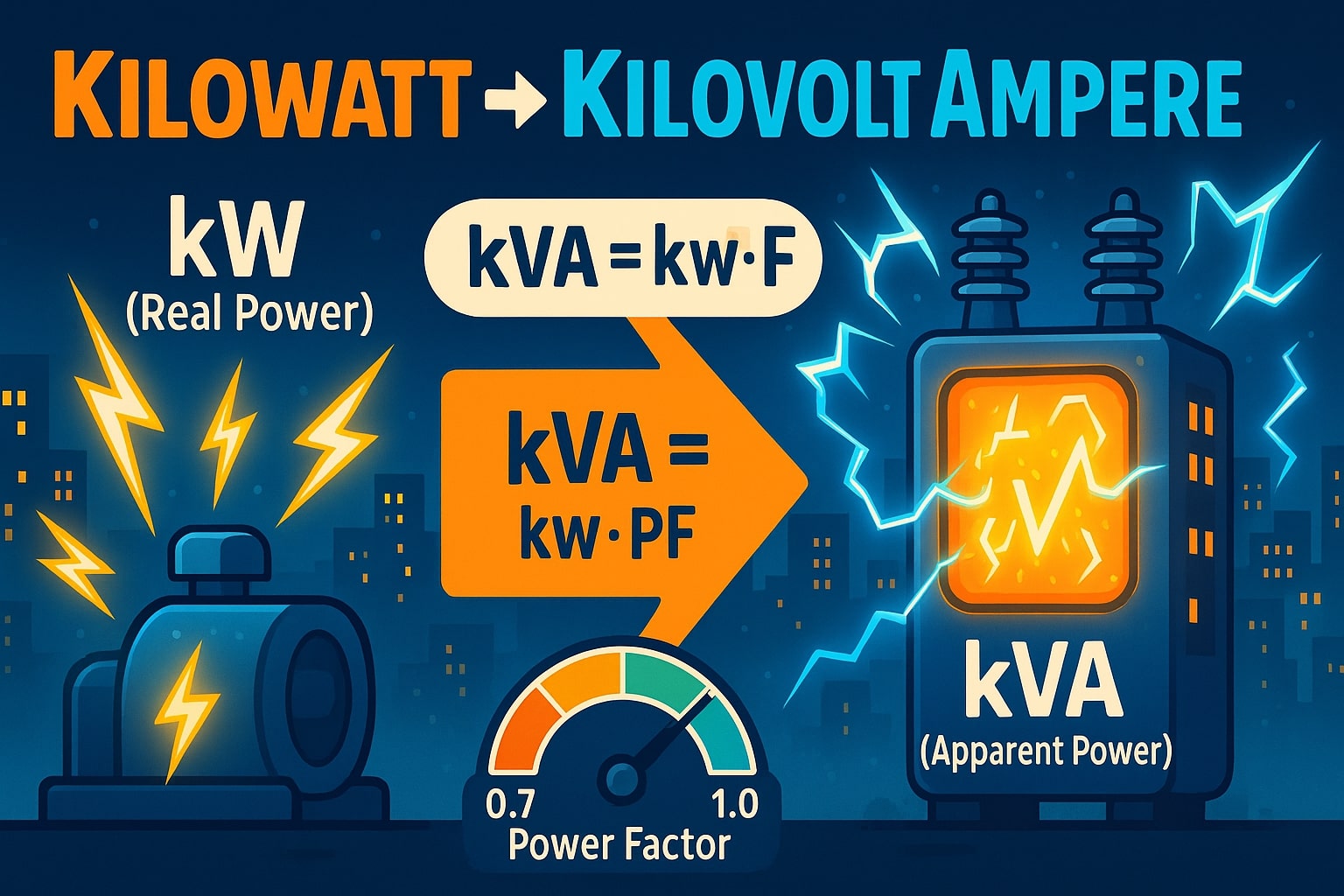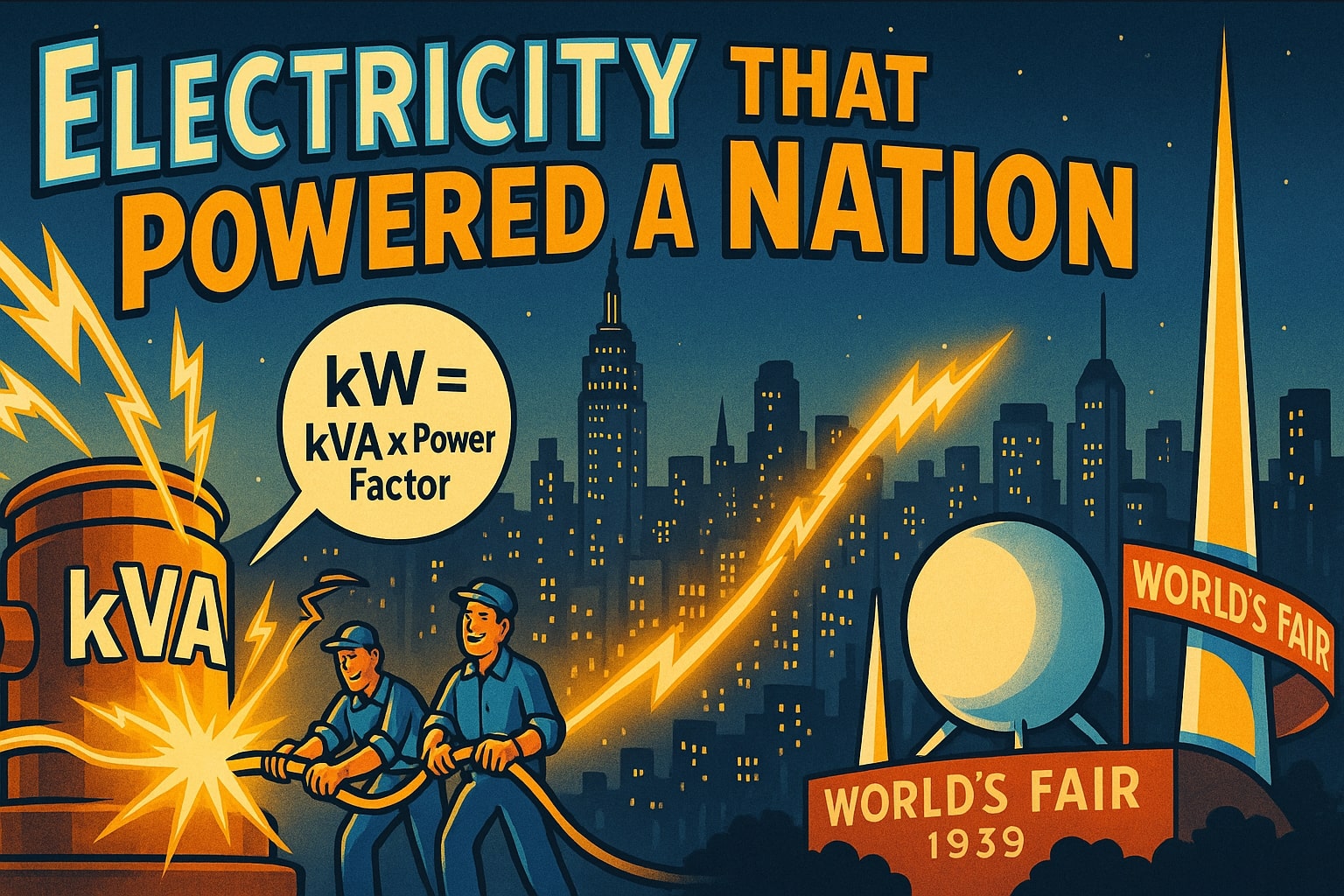kilowatt to kilovolt ampere (kW to kVA) - How to convert kW to kVA
Converting kilowatt to kilovolt ampere is one of the most common needs in electrical engineering, industrial operations, and energy planning. With the right formula, it becomes a straightforward process that helps businesses and engineers design efficient systems.

What is a Kilowatt?
The kilowatt (kW) is a unit of real power. It represents the actual energy consumed or produced by a system. One kilowatt equals 1000 W. In households, appliances like heaters, air conditioners, and washing machines are often rated in kilowatts. In the industrial world, kilowatts are crucial for measuring the true work performed by electrical equipment.
What is a Kilovolt Ampere?
The kilovolt ampere (kVA) is a unit of apparent power. It expresses the total power in an electrical circuit, combining both usable power (kW) and reactive power (kVAr). One kilovolt ampere equals 1000 VA. Power companies and generator manufacturers frequently use kVA ratings because they describe the maximum load capacity without factoring in efficiency losses.
Formula: Convert kW to kVA
The conversion depends on the power factor (PF), which measures efficiency. The general relationship is:
kW = kVA × PF
or rearranged for conversion:
kVA = kW ÷ PF
Example:
If you have a machine consuming 80 kW with a power factor of 0.8, the apparent power is:
80 ÷ 0.8 = 100 kVA
This formula ensures you can move between practical energy consumption (kW) and total demand (kVA).
For fast results without manual calculation, our Conversion Tools make the process quick and error-free.
Did you know?
-
In most residential systems, the power factor is close to 1, meaning kW and kVA are almost the same.
-
Large data centers often run with power factors between 0.9 and 0.95, ensuring efficiency and reducing wasted energy.
-
In cinema history, classic films like Metropolis (1927) featured massive power plants as a symbol of industrial progress, reflecting the era when kW and kVA were gaining global importance.
-
Many electric utility bills for commercial users are based not just on kilowatt-hours but also on maximum demand in kVA, which encourages businesses to improve power factors.
Electricity That Powered a Nation
In the early 20th century, the electrification of cities marked a turning point in modern history. New York City, for instance, expanded its grid rapidly, supplying thousands of homes and factories. Engineers had to balance kilowatts and kilovolts amperes to avoid blackouts carefully.
One famous case was during the World’s Fair in 1939, where massive electrical displays were powered by generators rated in kVA. To ensure smooth operation, planners converted those ratings into kW based on actual power factors. The success of the fair not only showcased America’s industrial might but also highlighted the practical importance of understanding the difference between kW and kVA.
This balance between real and apparent power became the foundation of modern electrical grids, allowing for reliable power distribution across continents. Even today, the same principles keep factories running, hospitals safe, and technology centers efficient.
Practical Tools Beyond Kilowatt to Kilovolt Ampere
When dealing with power conversions, accuracy matters. Alongside kilowatt to kilovolt ampere, you might also find it useful to try our Power Converter for a wide range of energy units, or the all-in-one Conversion Tools. These calculators simplify complex formulas, reduce mistakes, and give you reliable results instantly.
From Calculations to Real Energy Decisions
The conversion from kilowatt to kilovolt ampere (kW to kVA) is more than just dividing by a power factor—it reflects how energy flows in real systems. From powering cities to running industries, these units guide engineers in designing safe, efficient, and reliable networks. With Jetcalculator, you can move seamlessly between measurements and focus on what truly matters: turning energy into progress.


